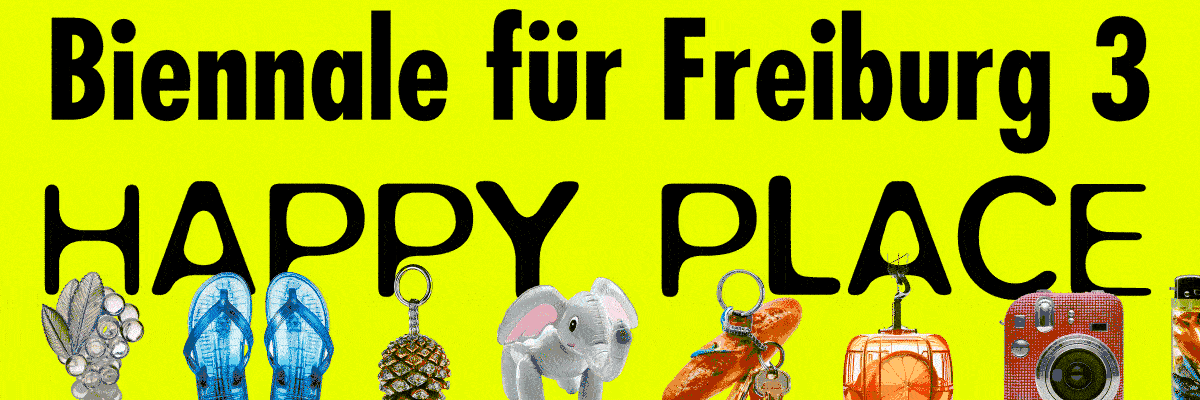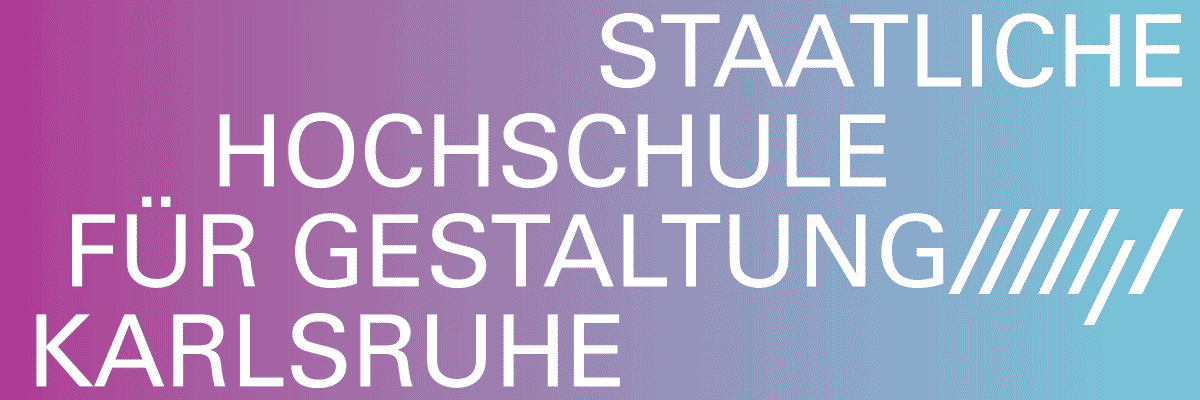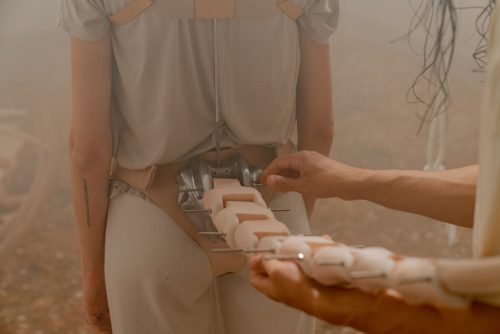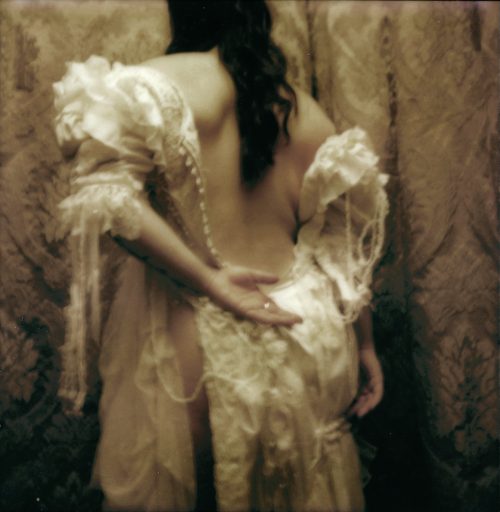
Iva Davidová, Tamara Pauknerová, Magdaléna Rybanská
I Like You Best When You're Starting To Crack
Project Info
- 💙 Studio PRÁM
- 💚 Šárka Koudelová
- 🖤 Iva Davidová, Tamara Pauknerová, Magdaléna Rybanská
- 💜 Šárka Koudelová
- 💛 František Svatoš
Share on

Advertisement



















I haven't eaten, my eyes are drying out. My fingers, clutching the rectangle of bluish light from the display, are tingling from lack of blood flow. Maybe they'll start turning blue too… Before the next catastrophic video ends, my thumb obeys the impatient signal from my brain, and the live broadcast of suffering flies off somewhere above, beyond my horizon. I don’t even know how many hours I’ve been lying on my side with my spine uncomfortably twisted. War scenes alternate with a fit check, then a filter of an anthropomorphic kitten. Time doesn’t exist; my physicality with all its needs is only an anxious memory blurred somewhere in a repressed presence. My tired pupils, with an involuntary blink, refocus on my own reflection in the shiny screen. My head spins into the dark circles under my eyes. Impulsively, I break free from my bodily rigidity, and my consciousness, like wind that brings rain, sweeps through the rustling blades of tall grass. Long-suppressed pain, along with the desire for liberation, starts—accompanied by the distant sound of cracking—to push out the curved row of nails that had been suffocating it beneath the impermeable surface of oppression. Through the first open crack, I leave behind the destructive stagnancy and negligence of life.
Magdaléna Rybanská in her multi-material installations explores situations where the expanding virtual space radically imprints itself onto the human physical experience. Her sculptural approach, which originally utilized mostly linear metal components, reflected the post-digital experience of her generation. Despite a return to relative flatness, her recent works turn toward personal bodily experience, transformations in human attention, and, by extension, shifts in societal perception. Onto silvery shiny sheets of metal, she first transfers collaged images of herself and hypertext links, and then almost violently hammers in traces of her fragmented attention. The deformations and tension of the originally smooth surface form an analogy to the distracted flow of thought. Art historian Claire Bishop, in her book Disordered Attention: How We Look at Art and Performance Today1, describes the condemnatory view on distracting screens as elitist and outdated. Transformed, fragmented attention can be a new form of productivity, generating a speculative digital landscape of chained impulses. Scrolling becomes a mode of thinking and models a simultaneous multi-trajectory of our attention.
Tamara Pauknerová gained attention last year with a series of steel objects featuring the motif of a heart. These linear, yet spatially grand sculptures embody an existential contradiction — all the steel rods that “pierce” the heart are removable, meaning the heart can be completely freed. But it is also these acts of piercing and confinement that allow it to stand upright and prevent it from collapsing to the ground with the clatter of metal. Tamara’s latest drawings are similarly raw and melancholic as her objects, and likewise speak of symptomatic pain where the physical and psychological levels of human experience merge. Her work with metal is echoed in her drawings also through the recurring motif of nails. These again represent a self-destructive condition of existential cohesion — they seem to frame and stitch together the individual motifs, yet at the same time evoke a visceral pain around the nailed-down lungs within the chest. The chest, after all, is the territory Tamara navigates when mapping feelings of anxiety and fear of diseases attacking the body. The heart hides in the relative safety of the ribcage corset, bounded at the back by the spine — another motif in the exhibition.
If we want to grab attention on social media, we add a picture of a cute kitten to the post. Iva Davidová works similarly. Her labor-intensive, delicate drawings of kittens on wood, despite the cuteness of the motifs, serve as a subliminal mirror of society and a tool for expressing climate grief. For Iva, kittens embody both care and mourning; their ears and snouts symbolize heightened sensitivity to interconnected natural cycles and interspecies dependencies of which humanity is a part. On closer inspection — which Iva’s blend of study and automatic drawing invites — every element of the scene becomes a deep analogy. Generally speaking, “nature” — through elements like grass, drops of sap and tears, and gently entwining stems — is a force that maternally cares for the kittens. In contrast, the human figure is physically absent in these scenes. The anthropocentric, destructive influence is implied by the dry, mown grass and a ruthlessly cut stump full of splinters. The pure white reliefs, which form a parallel creative line for Iva, at first glance seem thematically identical. But upon closer look, and influenced by their gleaming white innocence, they suggest that here the feline beings are freer entities, cooperating with one another. Still, Iva doesn’t attempt any paradisal idealization of life — even in the reliefs, the kittens die. But they are not passive victims of unjust oppression; rather, they are an autonomous metaphor for the cycle of life.
Šárka Koudelová




